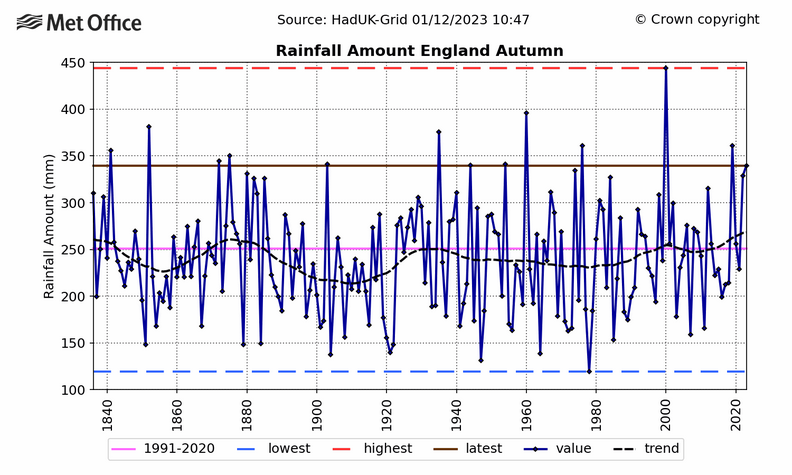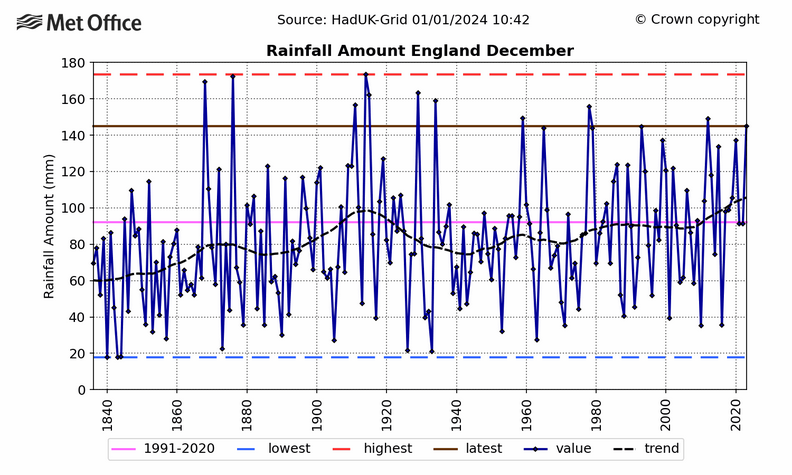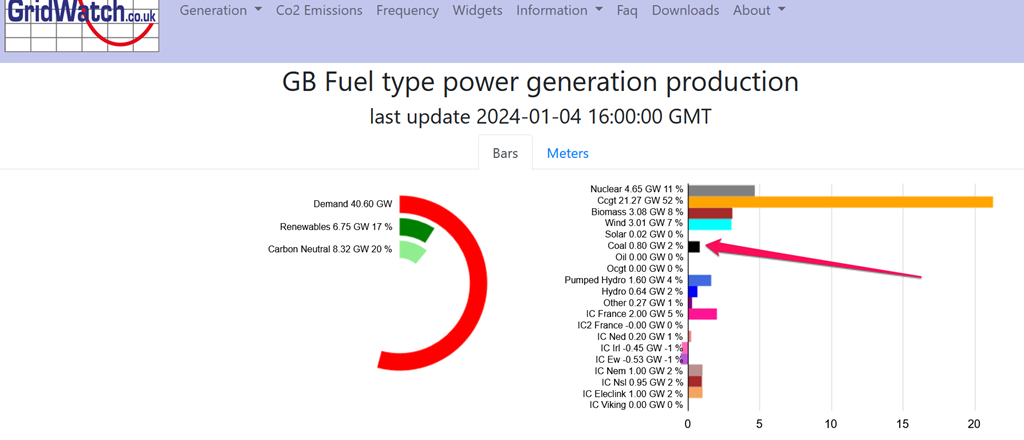STORM Gerrit arrived the day after Boxing Day, accompanied by the usual headlines: ‘85mph gales barrelled down on Britain’, screamed the Daily Mail.
As usual the public were being deliberately deceived. The 85mph claim was based on one site in North East Scotland, at the top of a 400ft cliff overlooking the North Sea, marked in red below.

Inverbervie, Kincardineshire
A few miles away at sea level average wind speeds never got above 30mph. The Met Office never reports any of this, preferring to publish its favourite sites on clifftops or halfway up mountains.
It was the same story a week later, when another system of low pressure came along to be given yet another silly name, ‘Henk’.
‘94mph winds pummel the UK’, shrieked the Mirror. This time the wind speeds were measured on the Met Office’s go-to weather station, the Needles, off the Isle of Wight. As this column has discussed before, the Needles sit at the end of a long, narrow peninsula, and the station is on top of a 260ft cliff. Winds there are routinely 30mph higher than even exposed sites nearby, such as St Catherine’s Point. Meanwhile average winds inland were typically around 30mph.
It rained as well last week! During the two days of Storm Henk, about an inch fell in parts of southern and central England. There is nothing at all unusual about this amount; it is the sort of thing which happens every year. Because the ground was already saturated, following wet weather last month, there was inevitably some flooding. But, for the most part, this was little more than flooded fields, overflowing river banks and localised flooding. Again, normal scenes in England. And as Patrick Benham-Crosswell pointed out in TCW this week, many houses built on flood plains were once again flooded. There was certainly none of the major river flooding which has hit the country many times in the past.
According to the Environment Agency, about 2,000 properties were flooded, a tragedy for everybody involved. But in overall terms, this is a tiny number. For instance, 55,000 were flooded in 2007.
Inevitably, the media jumped to blame it all on climate change. According to ITV: ‘Henk is the eighth named storm to have hit the country this winter and the pattern is likely to continue due to the effects of climate change. “This is climate change and the impacts we are seeing,” the Environment Agency’s Tom Paggett added. “We are seeing these increasingly wet and blustery winters. We are seeing storm upon storm which is exacerbating the issues”.’
Claims like this explain why the Met Office decided to start giving every low-pressure system a silly name back in 2015. But as it admitted in its State of the UK Climate last year, storms used to be much stronger:
‘The most recent two decades have seen fewer occurrences of max gust speeds above these thresholds [40, 50, 60 kts] than during the previous decades, particularly comparing the period before and after 2000.
This earlier period [before 2000] also included among the most severe storms experienced in the UK in the observational records including the “Burns Day Storm” of 25 January 1990, the “Boxing Day Storm” of 26 December 1998 and the “Great Storm” of 16 October 1987. Storm Eunice in 2022 was the most severe storm to affect England and Wales since February 2014, but even so, these storms of the 1980s and 1990s were very much more severe.’
Nor is there any evidence that December or the autumn last year were unusually wet.
We look like getting a few weeks of cold, dry weather from now on – so expect drought warnings soon!


In the meantime, sit back and enjoy Etta James:
What would we do without coal?
DURING COP28 last month, Energy Secretary Claire Coutinho bragged: ‘Eleven years ago coal was 40 per cent of our power generation. Next year it will be zero.’
It took just four days to break that pledge.
With wind power providing just 3GW, Britain needed to fire up the Ratcliffe coal power station to keep the lights on:

Last summer Coutinho’s predecessor Grant Shapps was desperate to keep two other coal plants on standby again this winter, Drax and West Burton. Last winter, the National Grid paid all three coal units about £400million to provide cover.
Shapps said it ‘would be crazy’ not to keep them on line again this winter. However, Drax and West Burton’s owner EDF refused, fed up no doubt with the continual threats to shut down coal power. They said they had already made plans to close their plants, and it was too late to backtrack.
Coutinho apparently believes that green virtue signalling is more important than keeping the lights on!
Ofcom head’s WEF role
MELANIE Dawes has been chief executive of the broadcasting watchdog Ofcom for nearly four years. Like most quango heads, she arrived on the Civil Service gravy train, having been permanent secretary at the Ministry of Housing, Communities and Local Government. She can therefore be thoroughly relied on to defend the Establishment agenda at Ofcom.
Much more sinister is the fact that she is also a member of the WEF’s Global Coalition for Digital Safety. Though it claims to be tackling harmful content online, its real purpose is tackle what it describes as ‘misinformation’.
It is totally wrong that the head of Ofcom should also be working for a globalist organisation set up to undermine democracy.

